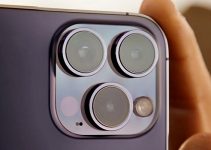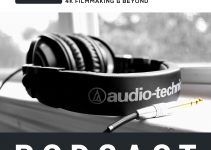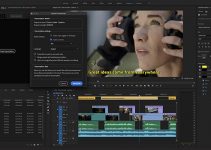In a year packed with eye-catching cinema camera releases, RED just might be one of the most intriguing and most talked about with the KOMODO 6K. It’s a RED camera with all the benefits that one should expect as well as a compact, all-in-one, ready-to-shoot solution. Coming from RED this is surprising as all their other cameras required a bucket of expensive accessories just so that they could function as normal.
Being relatively affordable is another advantage of the KOMODO and likely puts it in many shooters’ wish lists. Filmmaker Joey Helms caught on that this camera might be appealing to many who are new to RED cameras and put together a great video with the essential things you need to know.
Key Accessories
It may not require the usual accessories RED cameras are known to need, but the KOMODO is still a compact cinema camera that will benefit from some extra bits and pieces to make life easier. This camera especially has a fairly boxy form factor that could use some love.
But first! You have to make sure you are set on lenses. In my opinion the most interesting decision RED made with the KOMODO was to use the mirrorless Canon RF mount. And, at launch, it won’t actually support native RF lenses.
This means you will need an adapter. Canon has a good selection for EF lenses, including a basic EF-EOS R Mount Adapter, a version with a drop-in ND filter, and a 0.71x speedbooster model. I think the ND filter one is a great pick, though someone could make a strong argument for the 0.71x since the KOMODO is a Super 35mm camera.
You’ll next want a good bunch of batteries. The KOMODO works with standard Canon battery packs, specifically the BP-955 (4900 mAh) and the BP-975 (7350 mAh).
The camera will take two at once and they can be hot-swapped for long shooting times. As for media, the camera takes standard CFast 2.0 cards. Helms shows off an Angelbird AV PRO CF CFast 2.0 card that he uses, though other brands will do just as well.
While there is a display on the top of the KOMODO, the fixed nature of it and its small size means you’ll want to pick up a dedicated monitor—though you can use an iPhone or iPad if you want.
Finally, for better handling you’ll want a grip. Everyone seems to be recommending the RED Outrigger Handle. This purpose-built grip is lightweight, durable, has some adjustments, and features a built-in record start/stop button. You could even pick up a cage and a lot more accessories if you want.
Getting Ready to Shoot
First, you’ll want to turn it on. Compared to many cameras the KOMODO has a decently lengthy boot up time. Helms timed his at 28 seconds though it was running beta firmware. It is still a traditional cinema camera, so it is designed for reliability and has no recording limits. Hot swapping batteries helps.
He then introduces blackshading. This is an important stage that many cameras come from the factory with a setting and that’s it for the life of the camera. On RED cameras you perform it yourself. In simple terms, it measures the fixed noise patterns and then removes that from your footage for a cleaner image. Fixed noise is especially problematic looking while random noise can still come across as natural.
The important thing to know about blackshading is that changing your settings can impact its effectiveness. For best results, you’ll want to recalibrated if your settings or the scene changes dramatically. Things like longer exposures, high frame rates, temperature changes, and when the camera indicates it.
To perform it you head to the menu, go to the Maintenance tab, and his calibration. Before you start just make sure you have the lens cap on as it needs to be as dark as possible. It also takes a couple moments which you’ll need to factor into your setup time.
Codecs and Compression
RED cameras offers solid codec options for video with an obvious slant towards pro workflows. The KOMODO is no different with ProRes and R3D raw files. You’ll have to pick which one you want to use as there is no dual recording option.
R3D is objectively the best quality with massive editing potential. ProRes is better for less critical footage or long recordings, such as interviews, as it is smaller. Though honestly many people would be just fine with ProRes every time and still be incredibly happy.
To account for the larger raw file sizes, RED offers multiple compression options for REDCODE RAW. On the KOMODO it is simplified to LQ, MQ, and HQ. I think most people will immediately get that it means low, medium, and high qualities.
You’ll want higher qualities for scenes with a lot of detail or action, say moving trees in the background of a moving shot. For less-demanding shots, static buildings with blue skies for example, LQ will do just fine.
How to Expose
Every camera handles exposure a bit differently. Raw footage complicates that even more. You’ll want to use exposure tools, such as the RGB exposure, which is effectively a histogram. This will tell you whether or not you are clipping highlights or losing shadows and which channel is suffering from it. This is representative of the raw data so it will not come back.
The general tip is to give the camera as much room as possible while still making sure to create a balanced exposure. You have all the usual tools here, such as shutter, aperture, ISO, and optional ND filters.
For ISO you don’t have to really worry too much as raw files can adjust this setting in post. That means you’ll likely be paying more attention to ND and aperture, especially as you’ll likely be following the 180-degree shutter rule.
File Management
Each raw R3D file is actually a series of files all complied into a folder. This means you’ll want to be careful with how you manage all that data. All your NLEs should have no problem decoding all these files and playing them back normally.
Also in the folder is an RMD, which stores all your metadata. When you make changes to the metadata it actually saves it to the file so that the changes will follow the clip wherever you go.
Editing R3D Files
Make sure you have the latest updates for your NLE for best support. Also, RED makes REDCINE-X PRO software that you can use to view, manage, and edit your raw files.
For Final Cut Pro X you’ll need the RED Workflow Plug-in to work with the files. You may need to make sure your computer is powerful enough as heavy raw files can be hard on the system. Proxies may be a requirement in your situation.
Color Grading
In 2017 RED introduced IPP2, which is a dedicated image pipeline to maximize quality throughout the editing process. Make sure to get your settings in line with RED RWG/Log3G10. Helms uses a three-step process in his color grading workflow.
To start he sets the top level to a Rec.709 transform, generally picking a medium or high contrast with very soft highlight rolloff. In the second layer he applies some standard color correction to match footage and do basic changes.
He also edits the raw settings at this point. On the bottom layer he adds a look LUT that does the creative changes. Simple but effective.
The RED KOMODO is looking to be an amazing choice for filmmakers and it is relatively affordable. Are you curious about the KOMODO or thinking of picking one up?
[source: Joey Helms]
Order Links:
- RED DIGITAL CINEMA KOMODO 6K Cinema Camera (B&H)
- RED DIGITAL CINEMA KOMODO Outrigger Handle (B&H)
- Canon Mount Adapter EF-EOS R (B&H, Amazon)
- Canon Mount Adapter EF-EOS R with Drop-In Variable ND Filter (B&H)
- Canon Mount Adapter EF-EOS R 0.71x (B&H)
- Canon BP-955 Intelligent Li-Ion Battery Pack (B&H)
- Canon BP-975 Intelligent Li-Ion Battery Pack (B&H, Amazon)
- Angelbird 512GB AV Pro CF CFast 2.0 Memory Card (B&H, Amazon)
Disclaimer: As an Amazon Associate partner and participant in B&H and Adorama Affiliate programmes, we earn a small comission from each purchase made through the affiliate links listed above at no additional cost to you.
Claim your copy of DAVINCI RESOLVE - SIMPLIFIED COURSE with 50% off! Get Instant Access!





